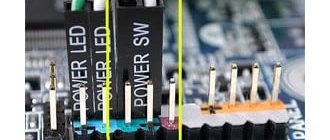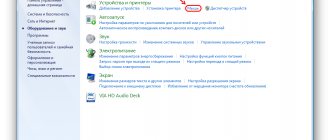A computer or laptop keyboard is equipped with groups of keys, each of which performs different tasks. Function keys F1-F12 can be programmed for specific actions, so they are convenient to use when working with the system and software. Each user uses these features to one degree or another, and the more knowledge he has about existing functions, the easier it is to interact with the computer.
The use of buttons and variations of their combination significantly speeds up the workflow. When combined with dedicated keys or the Fn control (a button found on laptop keyboards as well as some plug-in PC keyboards), the F1-F12 offers even more functionality that can be accessed instantly instead of having to perform multiple manipulations with the mouse.
By and large, full control of a computer is possible without using a mouse, using only the keyboard, but due to the fact that this method is unusual for the average user, it is used only in certain cases, for example, as a temporary solution in the absence of a manipulator. At the same time, it is better to remember and use existing functions more often, since the more keys and their combinations are used in processes, the faster and easier it is to work on the computer.
Function key assignments
Let's consider how many function keys are on a modern keyboard, how they are located and what actions they can be responsible for.
The number of F-keys is usually standard - 12, but on new Apple keyboards their number reaches 19. So, after the F1-F12 buttons, located in the top row, next are F13-F19, replacing Print Screen, Pause and others. They can be assigned any task. The ancestors of modern keyboards, devices for IBM-compatible computers, also had a considerable arsenal of function keys - 24. Today it is no longer easy to find such a “dinosaur”.
On laptop keyboards from different manufacturers, the F1-F12 keys can be programmed for various functions:
- Turn Wi-Fi on/off.
- Sleep mode.
- Connecting/disconnecting an external monitor.
- Adjust screen brightness.
- Enable/disable Touch Pad (built-in mouse for laptops).
- Adjust the sound, turn it off and other options.
Which specific key will be responsible for a particular function depends on the device manufacturer. There are no standards adhered to here.
In different programs, the purpose of each button will also be different; usually software developers assign the most popular tasks to the function keys to make working with the application easier. Moreover, for Windows OS, each key has a default value. By using, in addition to F1-F12, special keys located on the sides of the alphanumeric ones, as well as Fn, which is found on every modern laptop keyboard, you can significantly expand the range of software capabilities. Combinations can open various system services without having to search for them throughout the computer, as well as execute commands and perform other actions in the system or applications.
Let's look at several tasks that the F keys can perform in the operating system and some programs.
F1
- Call up help information in most software products.
- Win+F1 brings up Windows help and support, regardless of the presence of active windows.
- The Ctrl+F1 button combination in Windows hides or expands the toolbar in the active software window.
- Pressing F1 when loading the OS allows you to go to low-level CMOS Setup settings (not relevant for all BIOS versions; you can also use F1, Del or other keys and combinations).
F2
- In the standard Windows file manager, by selecting an object and pressing the F2 button, you can rename it.
- In the Microsoft Word editor, press Ctrl+F2 to open print preview.
- In Excel, the F2 key will open the selected cell for editing.
- The combination Alt+Ctrl+F2 opens the “Open” window in Microsoft Office software products.
- For certain versions, the BIOS allows you to proceed to change CMOS settings.
F3
- In Windows and standard OS applications, and also in some third-party programs, opens a search window.
- In Outlook F3+Win, an advanced search opens.
- Together with the Shift key, it allows you to change the letter case of the selected text in a text editor.
- In MS-DOS or the Windows command line, the last action is duplicated.
F4
- Moves the cursor to the address bar in Explorer and the standard Explorer browser.
- In Microsoft Word, repeats the previous action.
- Alt+F4 closes the active window of various software; pressing the same combination of buttons on the computer desktop opens the OS shutdown window.
- Simultaneously pressing Ctrl+F4 – closes active windows.
F5
- Updating open pages in browsers.
- Ctrl+F5 will clear the page cache and refresh it.
- In Word, opens the Find and Replace window.
- Power Point launches a slide show.
- Copy option in Total Commander.
F6
- Moves the cursor to the address bar of most browsers.
- Move option in Total Commander file manager.
- Quick save in games.
F7
- Check spelling in MS Office documents.
- Creating a new folder in Total Commander.
F8
- Activating the Windows boot menu, through which you can select the boot mode.
- Highlight option in MS Office documents.
- Deleting objects in Total Commander.
F9
- In Outlook, it starts sending and receiving correspondence from mailboxes.
- Updating a Microsoft Word document.
- Loading the latest game save.
F10
- Activate keyboard control for open programs.
- Shift+F10 brings up a context menu for objects (similar to RMB).
- Calls up the menu of many applications.
- For some builds, pressing F10 when turning on the device allows you to go to low-level settings.
F11
- Full screen mode in browsers.
- Transition to low-level settings on certain branded assemblies.
F12
- Calls up the “Save” window in MS Word, Shift+F12 saves the open document.
- The combination Ctrl+Shift+F12 will open a window for printing the current Word document.
- Ctrl+ F12 in Word brings up a window for opening documents.
- Calling the extended menu in applications.
- In many Internet browsers, it opens debugging.
This is only a small part of the capabilities of the function keys; there are many uses for them in every program, and on laptops in combination with Fn, the functionality of the F keys will be even higher.
Functional shortcuts for the Fn key
On Samsung laptops
- Fn + F1 – Opens the system settings service.
- Fn + F2 – Decrease display brightness.
- Fn + F3 – Increases display brightness.
- Fn + F4 – Switches the desktop to the second monitor.
- Fn + F5 – Disable the touchpad (touchpad).
- Fn + F6 – Mute sound.
- Fn + F7 – Decrease sound volume.
- Fn + F8 – Increase sound volume.
- Fn + F11 – Activates the fan at full power.
- Fn + F12 – Activate the Wi-Fi wireless network adapter.
On Lenovo laptops
- Fn + F1 – Mute sound.
- Fn + F2 – Decrease sound volume.
- Fn + F3 – Increases sound volume.
- Fn + F4 – Healing the DVD drive.
- Fn + F6 – Turns off the display power.
- Fn + F7 – Activate the Wi-Fi wireless network adapter.
- Fn + F8 – Mute the microphone.
- Fn + F9 – Turn off the camera.
- Fn + F10 – Switches the desktop to the second monitor.
- Fn + F11 – Decrease display brightness.
- Fn + F12 – Increases display brightness.
On HP laptops
- Fn + F1 – Call up the support directory.
- Fn + F2 – Decrease display brightness.
- Fn + F3 – Increases display brightness.
- Fn + F4 – Disable the touchpad (touchpad).
- Fn + F6 – Rewind in video, music.
- Fn + F7 – Stop video and music playback.
- Fn + F8 – Fast forward in video, music.
- Fn + F9 – Decrease sound volume.
- Fn + F10 – Increase sound volume.
- Fn + F11 – Mute sound.
- Fn + F12 – Activate the Wi-Fi wireless network adapter.
On ASUS laptops
- Fn + F1 – Enter sleep mode.
- Fn + F2 – Activate the Wi-Fi wireless network adapter.
- Fn + F3 – Decrease the brightness of the keyboard backlight.
- Fn + F4 – Increases the brightness of the keyboard backlight.
- Fn + F5 – Decrease display brightness.
- Fn + F6 – Increases display brightness.
- Fn + F7 – Turn off the display power.
- Fn + F8 – Switches the desktop to the second monitor.
- Fn + F9 – Disable the touchpad (touchpad).
- Fn + F10 – Mute sound.
- Fn + F11 – Decrease sound volume.
- Fn + F12 – Increase sound volume.
On Acer laptops
- Fn + F3 – Activate the Wi-Fi wireless network adapter.
- Fn + F4 – Enter sleep mode.
- Fn + F5 – Switches the desktop to the second monitor.
- Fn + F6 – Turns off the display power.
- Fn + F7 – Disable the touchpad (touchpad).
- Fn + F8 – Mute sound.
- Fn + F12 – Activate the Scroll Lock key.
How to enable F1-F12 keys
The function key block is used both on a laptop and on many keyboards connected to a computer to perform the basic functions F1-F12, as well as multimedia ones. To control mode switching, use the Fn button.
Using the Fn key on a laptop keyboard
So, in most cases, the function keys are configured to fire F1-F12 by default. To perform alternative functions, that is, to be able to use them to control the display brightness, sound and other parameters, you also need to press Fn together with the desired F-key.
At the same time, on some laptop models (HP, etc.), the function keys are configured as multimedia by default, and you can use them in the usual mode of performing actions F1-F12 by simultaneously pressing Fn.
Not all users can appreciate such creativity from manufacturers, since many prefer to mainly use the primary F-key options rather than multimedia ones. For example, when playing computer games where reaction speed is important, or when working with special software, for convenience I most often use some buttons from the F1-F12 row. It’s not entirely comfortable to constantly press Fn for the required response, when it would be more advisable to turn off the imposed multimedia mode and use the necessary keys immediately for their intended purpose. To change the priority, setting the function keys on a laptop is done in the BIOS, where you will need to change one parameter. To do this we do the following:
- Let's go to the BIOS. We press the desired key or combination when turning on the laptop; which specific buttons to press depends on the device model. If you need to use a function key, pressing Fn is not required here, since before the OS starts, the keys already perform basic functions.
- Let's move on to the System Configuration section.
- Here we look for the Action Keys Mode parameter, press Enter, the value from “Enabled” needs to be changed to “Disabled”.
Function key mode changes in BIOS
- On different device models, the parameter may be called differently (Hotkey Mode, Function Keys Mode, etc.) For Dell laptops, go to the Advanced – Function Key Behavior section and change the value to Function Key.
Changing the key mode in Dell BIOS
- Press F10, save the change (Yes) and reboot.
Now the F1-F12 buttons will function in standard mode, and to use multimedia options you will need to press Fn.
Functions of the F12 key
- In a text editor, Word opens the “Save” window.
- The Ctrl+F12 key combination in MS Word opens the document opening window.
- Shift+F12 in MS Word opens the “Save As...” window.
- The keyboard shortcut Ctrl+Shift+F12 in Word opens the Print window.
- Opens debug mode in most browsers.
- In MacOX, shows or hides the dashboard panel.
- When you turn on the computer (on some models), it allows you to select which device to boot from (hard drive, CD or DVD drive, floppy drive, USB drive, etc.).
Function keys on Apple keyboards have 19 F keys instead of 12
How to disable the F1-F12 buttons on a laptop
In some cases, when users do not want to use the functions assigned to the F1-F12 keys, but rather want to switch to multimedia mode so that the buttons perform a second action without pressing Fn, you can also change the assignment of primary and secondary actions by accessing the BIOS settings. So, in the System Configuration section you need to go to the Action Keys Mode parameter. If the value opposite it is “Disabled”, then the top row buttons F1-F12 perform their usual actions, that is, the option disables direct access to advanced functions with these keys, but they can also be performed in combination with Fn.
The value “Enabled” assumes priority for the use of multimedia capabilities, so if we are disabling function keys, we set this value. Essentially, the setting changes the operation mode of the top F1-F12 buttons from one to another, and you can set the parameter the way you want to work with the keyboard, rather than adapting to the default settings.
PS
The above-described functions of the F1 – F12 keys are only the main ones that are often found in Windows; in practice, you can find other values that are used in specialized software. Functionality increases significantly when used on laptops in combination with “Fn”...
Series of messages “KEYBOARD: keyboard shortcuts”:
Part 1 - computer :: Table of keyboard shortcuts Part 2 - computer :: The meaning of the F1 - F12 keys on a standard keyboard










